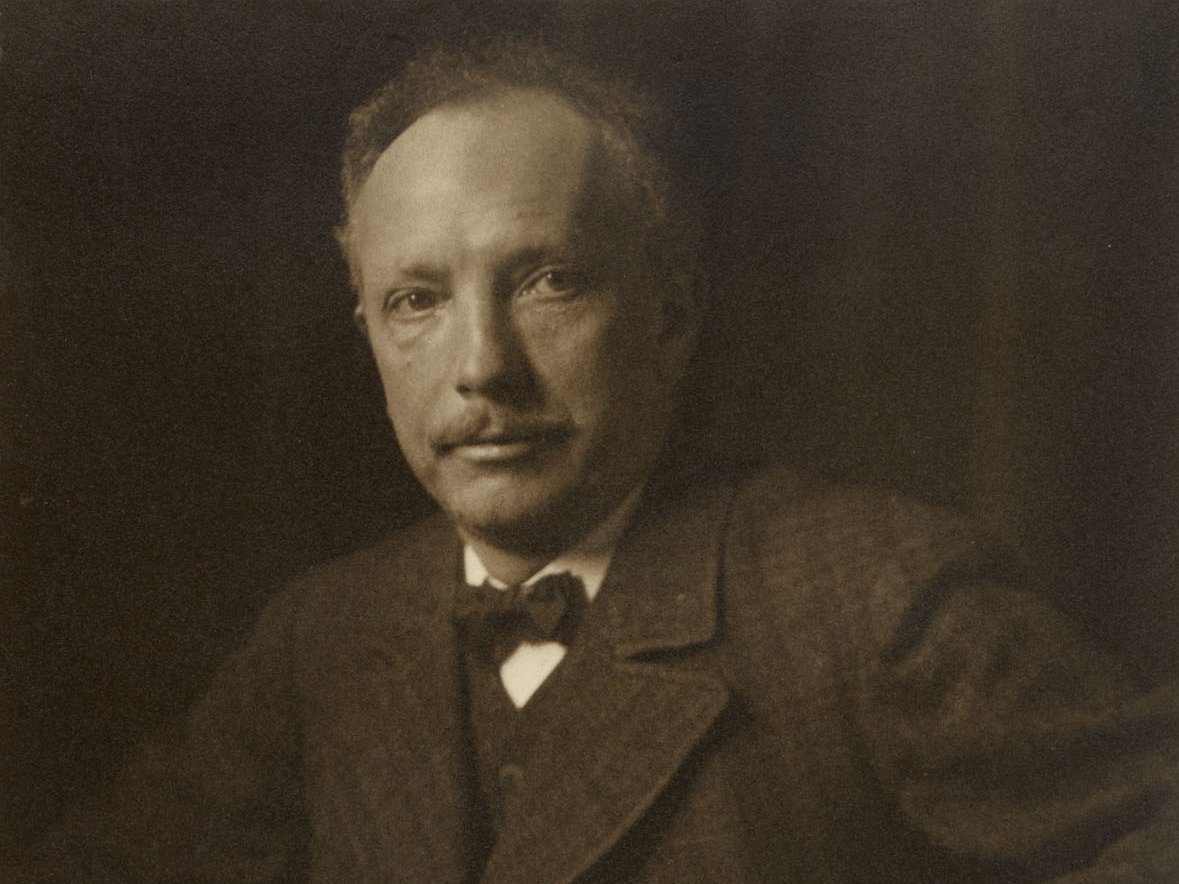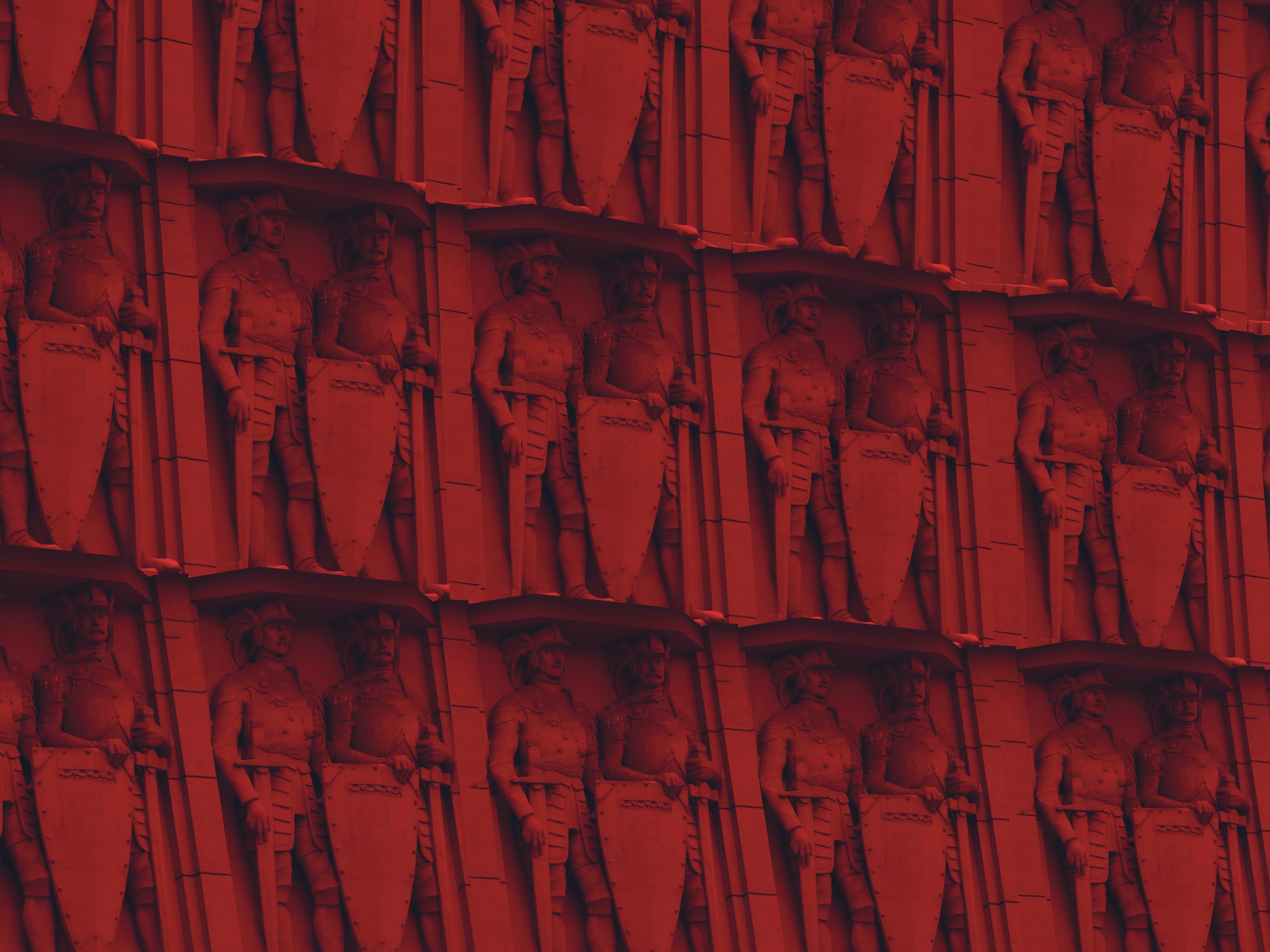
In Ein Heldenleben – A Hero’s Life – Strauss portrayed no one but himself. Yet how heroic was he in real life? He certainly had nothing in common with a hero in the classical sense of the term. No, Strauss revealed his courage in other ways, notably in his struggle for artistic self-determination.
“As for my Heldenleben, of course I didn’t engage in battles myself, but I could express the works of peace only by using themes of my own,” the eighty-two-year-old Strauss wrote in 1946 to his appointed biographer, Willi Schuh, adding that he had been annoyed by the “search by the musical theorists for ‘personal experiences’ and ‘confessions’” in his works. Too many stupid things had been written about him, and the issue that he himself had raised in his music had begged the question about his own heroic qualities and given rise to much idle speculation. What did this heroism look like?
Admittedly, he had been spared military service and never had to fight as a soldier against enemy forces, but there were plenty of other kinds of battles in his life. A musician who was as subjected as Strauss to the glare of public scrutiny had to face up to the musical and aesthetic debates of his time, and at the end of the nineteenth century these debates amounted to little short of a blood sport. In his visionary works Strauss guided orchestral music in a new direction, and the same was later to be true of his stage works as well. In his parallel career as a conductor, he also sought to combat routine and ossified structures. And there was a third arena, too, that he would later enter.
Strauss the conductor
It was Hans von Bülow, at that date in charge of the Meiningen Court Orchestra and later the first principal conductor of the Berlin Philharmonic, who threw Strauss in at the deep end when he invited him to conduct his first concert in 1884, allowing the then eighteen-year-old Strauss to conduct his own Wind Suite without a rehearsal. So successful was Strauss that Bülow invited him to become his assistant and successor in Meiningen. In this way Strauss gradually became familiar with the challenges of a Kapellmeister’s existence, an existence that involved dealing with talentless singers, scheming colleagues and narrow-minded superiors. He resigned from his first appointment at the Munich Court Opera (1886–88) when he was denied the opportunity to conduct the prestigious premiere of Wagner’s early opera Die Feen after he had invested a considerable amount of time and effort in rehearsing it.
Instead the task was allotted to Strauss’s colleague Franz Fischer, whom he described as “the most untalented musician I’ve ever encountered”. As Kapellmeister to the Grand Duchy of Weimar from 1889 to 1894 he fought with singers who insisted on performing Wagner’s music dramas with all their traditional cuts and crossed swords with “utterly incompetent” directors. His second stint in Munich from 1894 to 1898 included the first cyclical performances of Mozart’s Da Ponte operas, most notably Così fan tutte, which continued to be scorned at this time but which found a sympathetic advocate in Strauss. As head of music he was also able to focus on particular areas of the repertory, in the process commending himself to the authorities in Berlin, where he subsequently spent many years as Kapellmeister to the Court of Prussia at the Berlin Court Opera.
Strauss the composer
As a young man, Strauss wrote music that was firmly in the Classical tradition. After all, his father, who was the principal horn player at the Munich Court Opera and a Wagnerphobe par excellence, had inculcated in him a love of Mozart, Beethoven and, among contemporary composers, Brahms, leaving the adolescent feeling torn between by the many disparate voices that clamoured for his attention inside his head. In turn this encouraged him to over-orchestrate his scores.
In Meiningen he attended the world premiere of Brahms’s Fourth Symphony, and during their walks together the older man had proffered his much younger but undeniably gifted colleague some salutary advice: “Young man, just take a closer look at Schubert’s Dances and try to invent some simple, eight-bar melodies”. That same year a friend of Bülow’s fired Strauss’s enthusiasm for Wagner’s music, a development that Strauss’s father greeted “with dismay”. Wagner had declared that the classical symphony was dead, and as an alternative Liszt had created his own poetically inspired symphonic poems.
With his own first tone poem, Aus Italien (1886), Strauss sought to reconcile these two extremes, charting a middle course between “absolute” music and programme music and limiting the plots of these tone poems to a handful of hints, while also creating the sort of richly polyphonic orchestral textures that he was familiar with from Brahms. On their deepest level he built these works on traditional forms that include rondo form in Till Eulenspiegel and variants of sonata form in Don Juan and Tod und Verklärung.
In his choice of subjects he also went beyond the usual historical and mythical framework: in his struggle to combat hypocrisy and double moral standards, he privileged the reality of our human lives and gave musical expression to love and death and to the heroic and the quotidian. The unmistakable eroticism of works like Salome allowed the emotions to boil over, a point well illustrated by Max Reger’s defence: “I am not of the opinion that moral or religious sensitivities are in any way offended by Salome. And anyone who loses his religious faith as a result of Salome must already have lost it long ago.”
Strauss as a lobbyist in the fight for authors’ rights
In the year that saw the first performance of Ein Heldenleben, Strauss also opened up a new front by refusing to offer his latest work to his publishing friend Eugen Spitzweg. “Heldenleben is finished but for now it won’t appear in print since I’ve yet to reach an agreement with three publishers, all of whom have offered me a decent fee, only from now on I want to retain the performing rights in order that as the instigator of the whole of the composers’ movement I can set a good example.” At stake was the question of performing rights.
Until then composers had been able to earn only a one-off fee with their works by selling those works to a publisher. If the work was successful, the publisher became rich, whereas the composer had to make do simply with the honour that comes with being famous. Strauss placed himself at the head of a movement that championed authors’ rights, he and his comrades-in-arms ensuring that from 1898 onwards every performance of a copyrighted work was properly and separately recompensed. Publishers did not welcome this development since they were worried that they would make a loss if the work did well and that this in turn would mean a reduced turnover. It took three decades for Strauss’s dictum to be universally accepted: “Publishing rights to the publisher, authors’ rights to the author. There is no other way in the future.” The German musical copyright watchdog GEMA, which administers this principle today, owes its existence in no small part to Strauss.
We might wish that towards the end of his life Strauss had performed another heroic feat and stood up to the National Socialists. By now an international celebrity, Strauss certainly had it in his power to do so. But like so many others, he preferred to exercise his influence only in the shadows, hoping to prevent the worst excesses and to save his own skin, while disaster unfolded around him. But at the time of Ein Heldenleben all of this lay far away in the future.
Concert clip: Kirill Petrenko conducts “A Hero’s Life”

Richard Strauss and the Berliner Philharmoniker
On the first visit, the orchestra did not leave a good impression with Richard Strauss – they were to change that completely.

Richard Strauss’s “Metamorphosen”: An introduction
The title derives from the ancient Greek and implies music that transmutes and transmogrifies incessantly.

The “Don Juan” conflict
Richard Strauss owed practically everything to Hans von Bülow. Their mutual admiration seemed boundless, until a performance of Don Juan in Berlin.